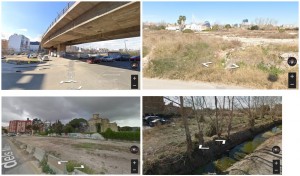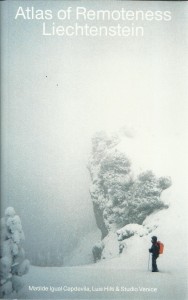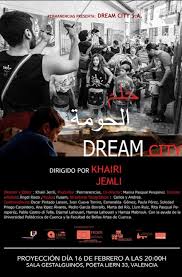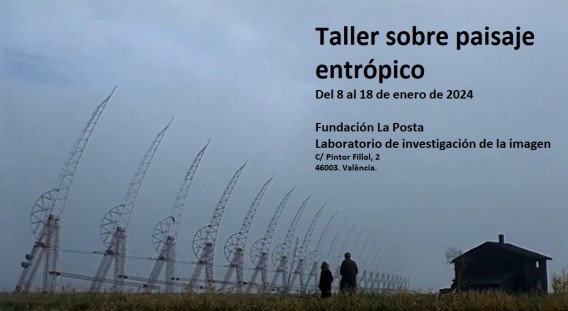Workshop on Entropic or Dialectical Landscape
Registration period opens
INTRODUCTION: ABOUT THE LANDSCAPE
One of the most relevant documents on landscape is the European Landscape Convention, made in Florence in 2000. This Convention includes, within the concept of landscape, also everyday or degraded landscapes, which are precisely those that characterize suburban territories in which an important part of our existence takes place. This workshop refers to those landscapes.

Stills from “Il Deserto Rosso” (1964), Michelangelo Antonioni.
The European Landscape Convention meant formalizing a change that was taking place in the way of perceiving the landscape, a consequence in turn of a change in its conceptualization. In a notable way, and as noted in the Recommendations for the application of the European Landscape Convention (2008), reference is made to the transition between the conceptualization of the landscape almost exclusively as an asset that is part of the collective heritage, from there it was seen in the framework of sustainable development (therefore, also incorporating cultural, social and economic factors) and, from this perspective, as the place of sensory and emotional experience.
From this new perspective, of particular interest are the methodological issues for the treatment of the landscape, which are not limited to protection (which correspond to the consideration of it as a good, with a tendency to equate it to the public domain), but rather also reference to ordination and management. This is a terminology from territorial planning, a discipline to which the treatment of the landscape has traditionally been linked, but we could well speak of analysis and programming of actions in relation to the landscape, a terminology more appropriate to the cultural perspective adopted here.
Regarding the methodology, which is the aspect that interests us most ―for the identification and characterization of landscapes―, the Recommendations to which we are referring realize that “the various practices already in progress, experimental or usual, in the different European States reveal a diversity of approaches in the production of knowledge that are a reflection of the diversity of cultural conceptions. However, there is a clear awareness of the inadequacy of the most used theoretical and methodological instruments for the needs of action. Too often they respond to compartmentalized disciplinary universes, while the landscape demands appropriate responses to transversal time and space scales capable of satisfying the need for knowledge of permanent transformations at the local level” (pages 13 and 14).
In this context, this workshop proposal is formulated that seeks, starting from a methodological approach that has the endorsement of several fields of knowledge (the first to take into account that of the plastic arts ―not in vain the first theoretical formulation of the concept of landscape was produced in the field of Fine Arts, in which it continues to have a determining role, now reborn in the field of expanded sculpture―, as well as architecture, geography and others), it seeks to generate a powerful school of thought that is capable of leading action in relation to the landscape in various areas and especially in the institutional sphere, particularly with regard to obtaining the declaration of Historical Site or Cultural Landscape (specifically those of a symbolic nature).
PERSONS TO WHOM THE WORKSHOP IS AIMED
Regarding the profile of the participants, the workshop is aimed, fundamentally, although without excluding other groups, at artists or architects who, either from activism or from an interest in contemporary cultural goods (two issues often closely related), want to give you a professional projection by directing your concerns towards a task of analyzing the characteristics of the territory and the landscape in order to reveal its historical, ethnological or anthropological values, and thus be in a position to prepare documents, reports, etc., necessary to obtain from the Administration the declaration of a place as a Historic Site or Cultural Landscape (particularly symbolic), in the context of a growing number of clients interested in these institutional declarations with variable purposes.
ABOUT A SPECIFIC EXPERTISE FOR THE STUDY AND ANALYSIS OF THE LANDSCAPE AND THE TERRITORY. THE CONCEPT OF ENTROPIC OR DIALECTIC LANDSCAPE.
The workshop focuses, as noted in the introduction, on the acquisition of a methodology and specific expertise for the analysis of landscape and territory oriented to action. In particular, of the everyday landscapes, even degraded, that characterize the suburban periphery in which our existence mainly takes place (with overlapping of large infrastructures, abandoned fields in ruins, “clandestine” waste dumps in broad daylight, vestiges of a civilization past that demands the establishment of links with the present time).

Giorgeta Overpass, Camí dels Rochs, Carrer de l’Alqueria dels Moros and Pedròs Entrance. The latter remembers the landscapes that Robert Smithson visited for his work “A Tour of the Monuments of Passaic, New Jersey,” where he played as a child.
Preliminarily, we can define the specific expertise that the workshop deals with, as that form of analysis of the characteristics of a territory and a landscape through the registration and interpretation of its identity values, traces of the memory deposited in them, traces and indications of human actions that have endowed them with a symbolism that transcends the contingency of the present time, and, in some cases, for the intervention projected in it, which seeks to enhance the symbolic aspects present in that territory, through the development of specific work for the site (normally signs, or axiomatic architecture, or other types of actions in the field of expanded sculpture), or, simply, the analysis is carried out for the purposes of making the administrative processing viable to obtain recognition from the competent authorities as a Historical Site or Cultural Landscape (particularly the symbolic ones).
The reference that can inspire both lines of action with a fairly high level of consensus is the work that Robert Smithson developed during his short life. The most relevant works in this regard, as far as he is now interested, are:
― “A Tour of the Monuments of Passaic, New Jersey” (1967)
― “Frederick Law Olmsted and the dialectical landscape” (1973)
Both can be read ―and see the images included in them― in Robert Smithson. Selection of writings, edition by Nancy Holt, whose Spanish version has been edited by Alias, México, last reprint of 2018. Also, with regard in particular to “A tour of the monuments of Passaic, New Jersey”, has also been edited in Spanish by Gustavo Gili, the architects’publishing house, in 2006, which gives us an idea of the transversality of his thought.
In the first of the writings we have cited, Robert Smithson refers to the landscape that constitutes the object of his study as “entropic landscape,” and, in the second, he refers to that same object of study as “dialectical landscape”. Hence the name of the workshop we have organized.

Monuments of Passaic, New Jersey, by Robert Smithson.
OBJECTIVES OF THE WORKSHOP AND MEANS TO ACHIEVE THEM
The objectives of the workshop could be summarized as follows:
1) the definition of a series of concepts that in practice are being used with diverse terminology and referring to different meanings, all of which should be organized, particularly with regard to the application in a work of identification and characterization of entropic or dialectical landscapes;
2) the definition of the instruments for the knowledge, intervention, planning and management of Historic Sites and symbolic Cultural Landscapes for their enhancement and updating or improvement;
3) Application of all this knowledge to a specific case.
4) the promotion of the values implicit in Historic Sites and symbolic Cultural Landscapes, based on an inventory/catalog of the most relevant ones,
5) (to achieve excellence) put emphasis on those that are integrated into international cultural landscape units specifically identified for that purpose, since this can lead to the establishment of international networks, which must result in the best programming of actions in relation to the identified landscapes and, ultimately, for the benefit of a better achievement of the general objectives of the work on the landscape and specific ones of the workshop.
INSTRUCTORS PARTICIPATING IN CONDUCTING THE WORKSHOP
Participating in conducting the workshop:
― Guillem Cervera Pascual, workshop coordinator and instructor; He has worked for years in the Administration of the Generalitat Valenciana, in the Department of Territorial Planning and Landscape; authorized lawyer of the Generalitat; The last destination was in Brussels, in the European Council, in the environment working group; guest professor in the Master of Advanced Architecture, Landscape, Urban Planning and Design, at the UPV; currently pursuing doctoral studies at the Faculty of Fine Arts of the University of Murcia under the direction of Pedro Ortuño, with a research project on an epic Spanish cultural landscape, which has to give rise to a creative documentary.
― Matilde Igual Capdevila, landscape architect, has focused her work on the landscape analysis phase and on the marking of the landscape with results loaded with symbolism that she takes from the territory under examination. She highlights her work together with fellow architect Luis Hilti (Zürich) & Studio Venice: Atlas of Remoteness Liechtenstein. Walking The Line from Rheinau, Liechtenstein, to Siba Brünna, Liechtenstein, Institute for Linear Research, Triesen, Liechtenstein, 2021.

― Khairi Jemli (Tunisia, based in Valencia), is an architect and artist, he develops work that uses audiovisuals as a form of expression, his work “Dream City” stands out, which tells of his walks through the San Antón neighborhood, Cuenca, and other places, in a project developed with the residents of the neighborhoods; He co-directed with María Ruido the documentary “The Dream is Over”, which deals with the border problem between Africa and Europe; “At 1, at 2, aladr3n”, about Aladren, a municipality in the countryside of Cariñena (Zaragoza). He holds a doctorate in architecture from the International Doctoral School of the University of Castilla-La Mancha [UCLM]. He is currently a professor at the University of Murcia.

― Theresa Wilshusen (Kansas City, Missouri, currently resides in Valencia), artist, familiar with the work of Robert Smithson in an extensive and intense way. “Theresa often experiments with various materials, manipulating them to achieve a certain desired result or simply exploring a new medium. She likes to incorporate maps and texts into her work as an identifier that the viewer can relate to. Her work is often motivated by geographical images as well as found natural objects” [from her CV https://www.twilshusen.com/about-in-spanish].
PROGRAM
The workshop will take place at the La Posta Foundation, on Calle Pintor Fillol, 2, València, between January 8 and 18, 2024, from Monday to Thursday from 4:30 p.m. to 8:00 p.m., according to the following program:
― Monday, January 8, 2024:
4:30 p.m.: Presentation, by the workshop coordinator. Conference: “An approach with a professional outlet for the analysis and programming of actions for dialectical or entropic landscapes.” Debate with all participants.
5:00 p.m.: by Guillem Cervera: “Two fundamental works by Robert Smithson: «A tour of the monuments of Passaic, New Jersey» (1967) and «Frederick Law Olmsted and the dialectical landscape» (1973)”. 5:50 p.m.: break. 6:00 p.m.: a summary of “The Red Desert” (1964), by Antonioni, focused on entropic landscapes; 18:45; debate and conclusions.
― Tuesday, January 9, 2024:
4:30 p.m.: by Matilde Igual Capdevila: “Straight lines and detours: exploration and experimentation in remote landscapes”; 5:30 p.m.: case presentation; debate with participants.
6:00 p.m.: by Guillem Cervera Pascual: “Historical Sites and Cultural Landscapes (with special reference to symbolic ones), in international, Spanish and Valencian regulations”; 6:50 p.m.: break. 7:00 p.m.: application of landscape procedures to the aforementioned figures, with special reference to public participation processes and exhibitions for this purpose. 7:30 p.m.: presentation of cases of possible Historic Sites and symbolic Cultural Landscapes; debate with participants.
― Wednesday, January 10, 2024:
4:30 p.m.: by Khairi Jemli: “Landscapes in Focus: Visual Narratives from San Antón (Cuenca)”; 5:30 p.m.: presentation of cases; debate with participants.
6:00 p.m.: by Theresa Wilshusen: “The representation of identities in the small details that define the space and in its interrelation with what is built in the territory”; 7:00 p.m.: case presentation; debate with participants.
― Thursday, January 11, 2024:
4:30 p.m.: by Guillem Cervera: “Contributions to the methodology for the declaration of a Historic Site, from the artistic current known as Spurensicherung [Traces of Memory]: recovery of vestiges; examples”.
5:30 p.m.: workshop day, with contributions of materials by the participants; with image projection; debate and possible choice of cases among the proposals presented, for presentation on the last day of the workshop, if applicable.
7:00 p.m.: end of the day.
[Weekend]
― Monday, January 15, 2024:
4:00 p.m.: field visit guided by Matilde Igual Capdevila: “A space-time walk Faitanar-Sociópolis-La Torre”.
7:00 p.m.: return to La Posta Foundation: debate by all participants; with projection of images captured during the visit; Possible approach to actions in relation to the analyzed landscapes.
― Tuesday, January 16, 2024:
4:00 p.m.: field visit guided by Khairi Jemli: “Life in the orchard farms affected by the ZAL has never been realized”.
6:00 p.m.: field visit guided by Theresa Wilshusen: “The straight line that takes us to the end of the city”, a straight line route from the Colón metro station to the Entrada del Francés, which will allow us to go seeing how the accumulation of city layers occurs during history.
― Wednesday, January 17, 2024:
4:00 p.m.: field visit guided by Guillem Cervera Pascual: “A possible Historical Site: La gola del Perellonet”.
7:00 p.m.: return to La Posta Foundation: debate by all participants; with projection of images captured during the visit; Possible approach to actions in relation to the analyzed landscape.
― Thursday, January 18, 2024:
4:30 p.m.: sharing of all experiences during the guided tours; projection of images, those taken by the participants; presentation by the coordinator of a summary/model of possible actions in relation to the landscapes analyzed, in view of those presented in the previous days.
5:30 p.m.: Presentation by the participants of proposals for exposing the results of the analyzes carried out on the landscapes.
6:30 p.m.: Conclusions and evaluation of compliance with the objectives set for the workshop.
7:00 p.m.: end of the day and the workshop.
FORM OF PARTICIPATION
Those who are interested in participating in the workshop must submit their application, with acceptance of the conditions referred to in this announcement, to follow the program established therein, by email addressed to laposta@fundacionlaposta.org
Applications will be accepted up to a maximum of 12.
Admitted applicants will receive a confirmation email in which they will be provided with the information to make a donation to the La Posta Foundation in the amount of €50.

